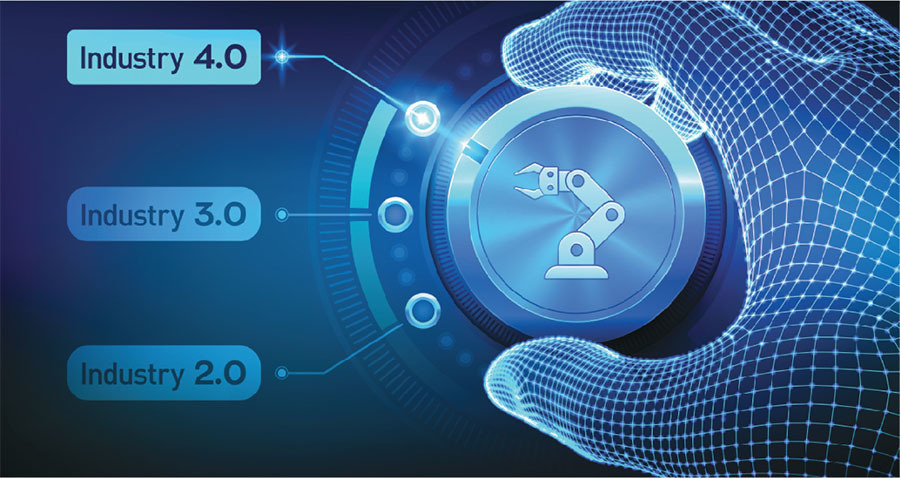
The future of our work environment is going to be highly influenced by several technological advancements such as automation, artificial intelligence (AI), robots, big data and data analysis. These significant technological changes are referred to as “Industry 4.0” or the Fourth Industrial Revolution. Industry 4.0 has positive impacts on our lives through increased productivity and new economic opportunities. However, it can create additional burdens and challenges for managers and employees.
- Managers need to define new jobs, find qualified personnel, offer higher wages, train and motivate employees for the latest changes in the workspace.
- Employees face the fear of job loss and lack of educational competencies.
To date, we have seen an increase in the use of advanced technologies by several companies. Amazon is the one that is using AI and machine learning to automate tasks in the warehouse. They are using intelligent bots in the picking and packing of the components, which increases productivity through faster processing of the orders and assigning less repetitive and labor-intensive tasks to employees. To augment the quality of search results in customers’ shopping experience, Amazon uses AI and machine learning to predict the context from their customers’ search queries and offer them the product they are looking for. They are looking to improve people’s shopping experience by matching only high-quality products to search queries.
Although these technological innovations have revolutionized the way companies conduct their business and help them grow their productivity, it also has created irreversible shifts in job structures and caused significant labor gaps. It is safe to say that we will see a loss of certain types of jobs, such as picker positions, in the warehouse of the future.
The critical consideration is providing people the opportunity to shift from working in the jobs of yesterday to the jobs of tomorrow. What skills do they need to possess as they are moving toward jobs of the future?
The emergence of the COVID-19 pandemic provides a good example of the fast-changing environment of jobs due to a tremendous increase in internet use and working remotely. E-commerce implementation in the distribution industry is one of the profound impacts of the COVID-19 crisis, which requires defining a much different distribution model. The industrial distribution industry provides services to the whole supply chain of consumers, from material producers to end-product customers. This sector is not secure from the rapid technological changes and the corresponding impacts on the workforce.
Dr. Michael Johnson at Texas A&M University and I along with research team member Pouneh Abbasian were interested in learning more about the impact of Industry 4.0 on industrial distribution and warehousing industries in the United States. For this reason, we selected industrial distribution companies that were in states including New York, Illinois, Pennsylvania, Louisiana, Georgia, Florida, Arkansas and Texas. Through interviews with an experienced workforce from the selected industries, these groups of researchers explored challenges/barriers, skills, innovations, opportunities and motivations involving the implementation of Industry 4.0 into the current and future of these companies.
Throughout this research, we were able to identify some of the necessary skills and capabilities for the workforce that would prepare them for this industrial revolution.
Of the 22 respondents participating in the study, 13 were in CEO, vice President, president and director positions, and the other 9 participants were in warehouse management, operations management, shipping supervisor and logistics coordinator positions (the respondent ratio included 23% female respondents to 77% male). All participants were from industrial distribution industries, such as industrial gas and welding supplies distribution, power supplies distribution, industrial distributors of hydraulic, pneumatic and chemical distribution companies.
Key learnings
Now that we are aware that technology would impact job structures of the future, we need to understand how we can apply some of the lessons learned from research efforts to better prepare our industrial distribution and warehouses moving forward.
 MHI Solutions Improving Supply Chain Performance
MHI Solutions Improving Supply Chain Performance